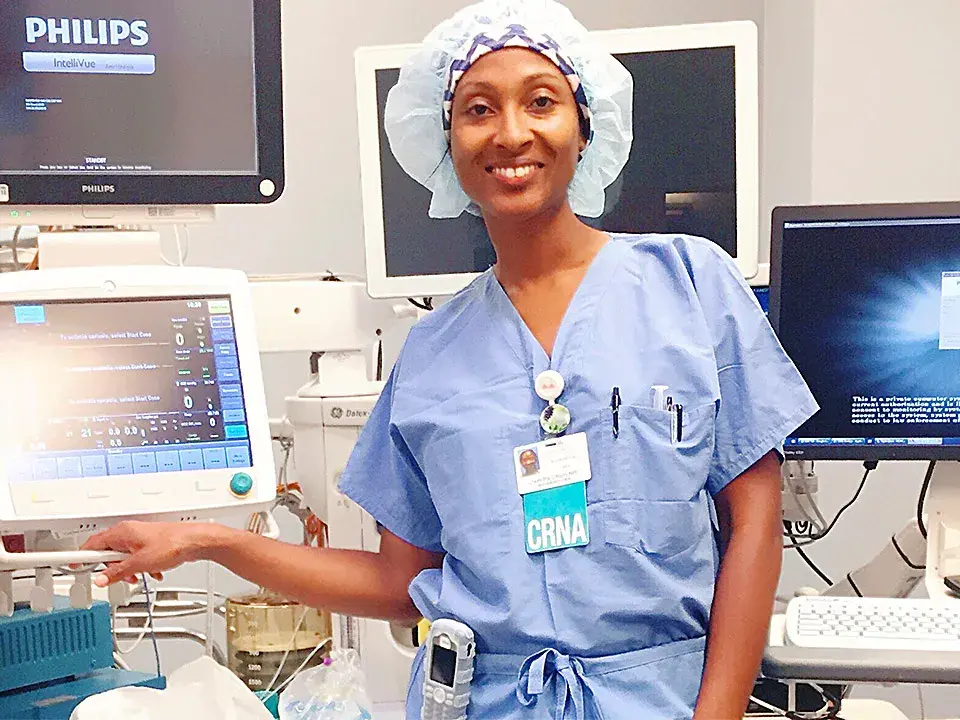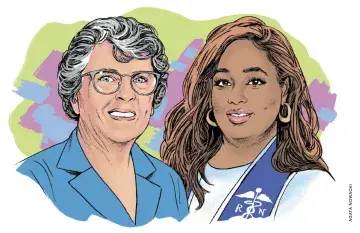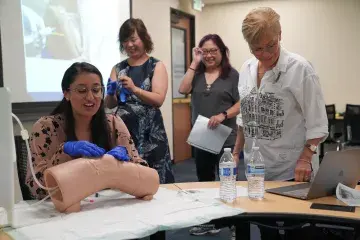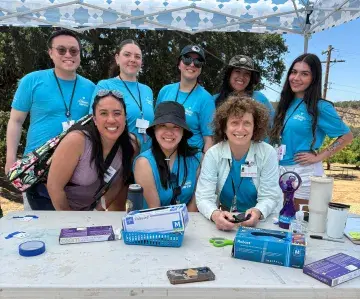SMU Nurse Anesthetist Leads on Diversity at UCLA

Jamilla Churchill, CRNA ’16, is among the mere 2% of African American nurse anesthetists in the U.S. As a founding member of the UCLA Equity, Diversity, and Inclusion committee for the anesthesiology department, she’s also an advocate for people of color in nursing and felt called to nursing even more strongly by COVID.
In the third and final installment in our Q&A series with Master of Science in Nurse—Nurse Anesthesia alumnae who received the 2021 Create & Cultivate (C&C) 100 Award for their work fighting the pandemic, we asked Churchill how the pandemic impacted her work and to tell us about her advocacy efforts. (Read the series.)
What’s work life been like for the past year?
It has been a difficult but rewarding experience. I equate it to being in the military. No one wants to go into war, but when it’s time for you to go, you go. That’s what you signed up for and what you're trained to do.
How was your personal life been impacted by COVID?
It has been tough being separated from friends and my family in the Bay Area for over a year and also having my son home-schooled. There is this looming fear that you are going to contract the virus and infect your family.
How did work at your UCLA Health change with COVID?
We canceled all elective surgeries and only allowed urgent/emergent surgeries—acute diseases, transplants, cancerous tumor resections, and traumas. I am thankful that my hospital was aggressive in terms of testing, training, and providing protection for employees. Intubating a patient with COVID, which is something we normally do, became a not-so-normal procedure. Suddenly, intubating a patient became high-risk because we’re basically aerosolizing the virus into the OR.
What inspired you to become a nurse?
My initial degree was in public health. After seeing the clinical side of nursing and their impact on the community, I wanted to be more hands-on. In 2004, I earned a BSN degree from the ABSN program at University of Florida.
Can you tell us about your efforts to diversify the nurse workforce?
As an African American woman, I represent a very small percentage of nurse anesthetists in the country. I will always strive to challenge that reality and work on changing the face of nurse anesthesia to reflect the communities that we serve. As a member of the UCLA Equity, Diversity and Inclusion committee and a board member of the Diversity in Nurse Anesthesia Mentorship Program, I advocate for increasing diversity in nurse anesthesia and all of medicine.
Why did you choose SMU for graduate school?
First, Marc Code, the program director when I applied, was amazing and phenomenal in terms of having a holistic view of the student. He understood that I had important roles as both a student and a mother. The field of anesthesia in general—and especially the training—can be very tough, demanding, and impersonal. I really appreciated how Samuel Merritt saw us as individuals first.
Also, the academics and clinical experiences were second to none. Since I was born and raised in Oakland, I cherished the idea of being able to train and then serve the community that raised me. For me, SMU was the only choice. It was close to home, offered outstanding academics, and is an academic institution that promotes balance and wellness—a triple threat.
What stands out from your time at SMU?
The training. As the only nurse anesthesia program in Northern California, the school provided us with unlimited options in terms of clinical sites and surgical cases without having to compete with students from other nursing and residency programs. When I graduated from SMU, I felt that I had the knowledge base and confidence to practice independently.
What’s next for you?
I plan to return to school once again to obtain my PhD in public health with a focus on African American maternal mortality. Black women are dying at a disproportionate rate during childbirth and postpartum periods. This epidemic is receiving a lot of attention and funding for research to determine the root causes and possible interventions to protect this vulnerable population. I would like to contribute to fixing this problem.


